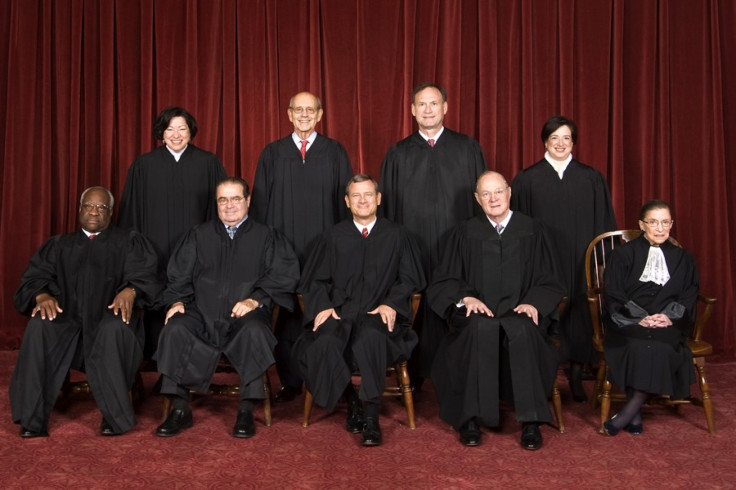Supreme Court Under Roberts Has Most 'Elite,' 'Cloistered' Background: Study

President Barack Obama may have changed the face of the U.S. Supreme Court by appointing Justices Sonia Sotomayor and Elena Kagan. But the Roberts Court may be the most homogenous in terms of professional background, even compared to all the legal minds who served on the nation's highest bench.
A study released last week from University of Tennessee College of Law's Benjamin H. Barton tracked the backgrounds of all 112 Supreme Court justices going back to John Jay, the court's first chief. According to the study, the current group of justices have spent more time in academia, on the appellate courts and living in Washington, D.C., than previous courts.
This narrow background has inoculated the current Roberts Court justices from the general public, unlike past justices who have had more trial experience, worked in private practice or as prosecutors, and held elected office.
These cloistered and neutral experiences offer limited opportunities for the development of the most critical judicial virtue: practical wisdom, Barton writes. There is a concern that the experiences of the Roberts justices are quite distinct from past justices and that these differences are deleterious.
Current High Court: Low Amount of Private Practice
On private practice, the current court has 54 years of private practice experience, the lowest amount of time compared to other courts.
Further, each justice has fewer than 10 years of practicing at a private firm. And while the justices have spent time in government -- Kagan was the White House solicitor general, the administration's top Supreme Court attorney -- Barton says that experience is not extensive enough to make up for the lack of private practice work.
The Roberts Court justices have also spent the most time in legal academia, with 95 years of experience among the nine justices. For instance, Kagan was dean of Harvard Law before she became solicitor general; Justice Antonin Scalia was a law professor at University of Chicago.
As for educational background, Barton says Supreme Court justices have increasingly spent time at elite universities, which is defined as the Ivy League schools and Stanford. The current crop of justices has spent 55 years studying at these institutions, ranking the Roberts Court first by a wide margin.
No Political Experience
Another distinguishing feature of the Roberts Court is the lack of political experience. While the court is seen as a haven from politics, there is a rich tradition of elected officials taking a seat on the bench, like Chief Justice Earl Warren, a California governor, and William Howard Taft, who served as chief justice after his presidency.
The retirement of Justice Sandra Day O'Connor, a former Arizona lawmaker, left the Supreme Court for the first time without someone with electoral experience.
While Barton acknowledges important personal details like religion, race and upbringing, he laments the relatively small amount of technical experience with the law today's justices possess.
Cloistered and neutral means settings where a lawyer is kept out of the fray and encouraged to think about legal problems (and life) in the abstract, Barton writes. These justices have spent more time in appellate judging and legal academia than prior justices... Neither job involves much contract with the public at large.
--
© Copyright IBTimes 2024. All rights reserved.





















